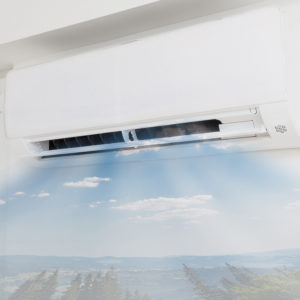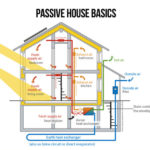 For nearly a decade, the global HVAC industry has been experiencing a steady boom. In fact, the industry has grown every year since 2011, and that trend is expected to continue through 2019 and beyond. Analysts are predicting 9% growth for 2019 with more than $70 billion in additional revenue over the coming years.
For nearly a decade, the global HVAC industry has been experiencing a steady boom. In fact, the industry has grown every year since 2011, and that trend is expected to continue through 2019 and beyond. Analysts are predicting 9% growth for 2019 with more than $70 billion in additional revenue over the coming years.
What’s driving those expectations? What do HVAC professionals need to know about this year’s main trend? Here’s a quick rundown of some of the reasons why 2019 is going to be the year for energy efficiency in HVAC.
Evolving Department of Energy compliance standards
Last year in the United States, the Department of Energy put into effect new compliance standards for energy efficiency. They’ve called it the “largest energy-saving standard in history.”
The new standards are expected to reduce carbon pollution by 885 million metric tons and reduce commercial heating and cooling usage by 1.7 trillion kWh over the next 30 years.
The positive effects will extend past their environmental impact. As HVAC companies and equipment owners strive to comply with the new standards, there will be an urgent need for new innovation at the manufacturing level, and equipment upgrades or retrofits at the consumer level.
New HVAC rooftop units and other equipment
HVAC manufacturers have wasted no time in preparing for the implementation and adoption of the new energy efficiency standards. New technologies are already widely available to help prevent heat loss, reclaim dissipated heat, co-opt renewable energy sources, and more.
These technologies are largely targeted to improve indoor air quality and building automation control. Capturing this lost energy will greatly reduce the environmental impact of older HVAC equipment.
Smart technology
From automation to remote monitoring, more and more consumers are seeking smart systems and technology to optimize their heating and cooling usage. In the home, this includes compatibility with devices like the Nest thermostat, which intelligently adapts your energy usage to fit your needs in the most efficient way possible.
In the field, this includes commercial HVAC units that can monitor themselves, diagnose problems, and proactively report to off-site experts before larger issues arise. For HVAC installers looking to grow the portion of their business that deals with ongoing service agreements, this technology is a huge win.
Higher upfront costs versus long term savings
Of course, meeting such high energy efficiency standards doesn’t come cheap. Manufacturers and consumers alike will face higher upfront costs for more advanced equipment. But, with these higher costs and the urgent need to upgrade or retrofit come long-term savings, as more energy efficient equipment will save owners considerably year over year on their energy costs. For example, the DOE estimates that savings could be as high as $4,200 to $10,000 over the lifespan of a standard rooftop air conditioner.



